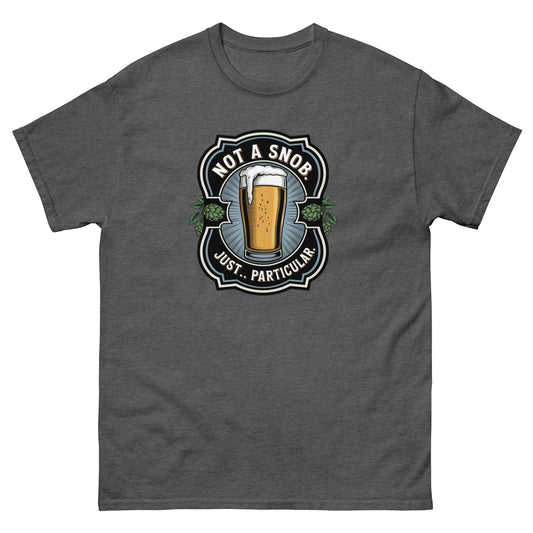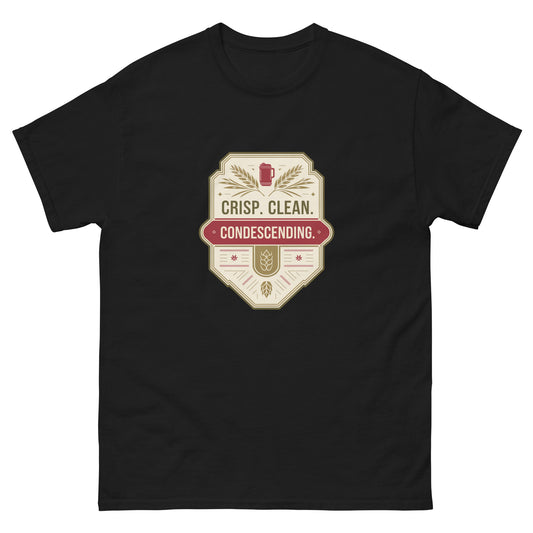Coopers nailed the pour—are you nailing the flavour or just bottling disappointment?
Share
Behind the Creamy Head: What Makes Irish Stout So Damn Satisfying?
There’s something about a good stout that hits differently. It’s not just the rich, dark pour or the cascade of tan foam that settles into a creamy beige head — though that part’s magic too. It’s the way it holds its own at the end of a long day. Unpretentious. Grounded. Satisfying.
And when you get it right with the Coopers International Series Irish Stout 1.7kg, it’s like catching lightning in a pint glass. Bold, smooth, and just bitter enough to feel proper.

The Turning Point: From Sharp to Silky
Many first-time stout brewers say the same thing: “It came out a bit harsh.” That dry roast bite is meant to be there — but it shouldn't punch you in the teeth. The trick is balancing the roasted bitterness with body, mouthfeel, and a clean, long finish.
Here’s what changed for one of our regulars. He’d brewed a couple batches with basic stock kits — decent, but always a bit flat and harsh. Swapped to the Coopers Irish Stout, added a 500g dose of dried malt extract and used a controlled fermentation jacket to keep the temp steady at 20°C. What came out? Smooth, creamy stout with that Guinness-like roast without the bite.
“It poured like a pub beer, right down to the foam swirl. Mates couldn’t pick that it was home-brewed.”
What Makes Coopers Irish Stout Different?
This is not your average tin of brew goop. The Coopers International Irish Stout uses a rich blend of malted barley, roasted and flaked barley, and select hops to nail that deep black appearance. What you get:
- Aromatics: Notes of coffee, dark chocolate, and a whisper of liquorice
- Body: Full-bodied with a roasty backbone and smooth bitterness
- Finish: Dry, with a rich mouthfeel and creamy beige foam
Add 500g–1kg of dried malt extract for extra body, or swap in a can of dark malt-enhancer if you like a bit more oomph. We stock both, if you’re wondering what's best for your setup.
Ferment Like You Mean It
Temperature means everything when you’re brewing dark beers. Too high and you’ll end up with fruity esters and harsh finishes. Keep it steady around 18–20°C and the yeast will work gently enough to let those deeper flavours come through cleanly.
If your fermenter doesn’t live in an insulated shed or fridge, use a heat belt with a timer — one of the unsung heroes in our brewing aisle. Combine that with a simple stick-on thermometer and you’re already ahead of the game.
You Can’t Rush Creamy
The best stout brews reward patience. Let it condition in the bottle for at least three weeks — six if you’re in no hurry. That’s when the roasty edges smooth out and the head retention kicks in properly.
If you’ve got a kegging setup, even better. After carbonating, let it sit cold for a few days before pouring the first glass. The head settles tighter, the bitterness evens out, and it drinks with quiet confidence.
Bring Out the Best with These Add-ons
To really dial it in, consider adding:
- 20g chocolate malt grains steeped and added early if you want extra depth
- Flaked oats for silky texture (2–5% of your grain bill max)
- A touch of lactose for creaminess if you're after a milk stout spin
All of these are staples in our ingredient fridge — swing by if you fancy experimenting or ask us how to balance them properly for the style. We’ve brewed this combo more times than we can count and have the tricks up our sleeves if you hit a snag.
Why This Stout Sticks with You
Some beers fade from memory after the burp. This one lingers. Not in a heavy way, but in that “wish I had another stubby” kind of way. And the best part? You crafted it yourself – the process and the pint. That satisfaction goes deeper than just flavour.
If you've been tinkering with homebrews and wondering when it all clicks — the pour, the head, the finish — this stout might just be your turning point.
Good brewing isn’t about fancy setups. It’s about ingredients that work, guidance that makes sense, and letting time do what it does best.
Cheers to smooth stouts and better brews,
Candeece

Stay Connected
Join our homebrewing community: Beer and Barrel Society on Facebook
Follow our Facebook Page: Strathalbyn H Hardware on Facebook








